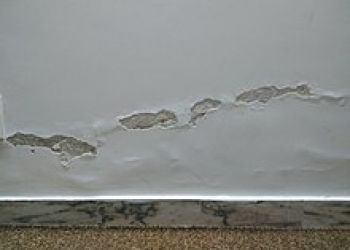This sentence causes a huge upset with vendors of traditional buildings and should never happen in the first place.
We often receive calls from homeowners stating that “During their inspection they detected damp issues highlighted by raised moisture conditions using the aid of a Protimeter “damp meter”.
Damp (resistance) or moisture meters (“MM”) measure conductivity and are only suitable for use on clean, untreated timber. They cannot be used to measure moisture in other building materials – as stated in BS 6576 and BS 5250.
BS 6576: Code of practice for diagnosing rising damp in walls and buildings and installation of damp-proof courses, quite clearly says; ‘Electrical moisture meter…Surface measurements cannot alone give proof of rising damp, so further evidence may, where permitted, be obtained by.. measurements taken within the depth of the wall. Chemical (carbide) or gravimetric methods can be used.
BS 5250: Code of practice for controlling condensation in buildings, says; ‘Accurate measurements of the moisture content of brick or mortar cannot be obtained by the use of electrical moisture meters because the presence of salts increases the electrical conductance of the water, giving falsely high readings. Gravimetric methods carried out on samples taken from the fabric give the most reliable results. The use of chemical (carbide) absorption type moisture meters will give a result in a short space of time and are almost as reliable.’
So why does it happen?
Blame and responsibility basically, along with ridiculous workloads that many high street national surveyors receive every day. Imagine undertaking several surveys a day, 5 days a week. Do you have time for in depth analysis and review, time to review photographs and tests… of course not? So, what happens is the use of the protimeter, quick and easy, throw it around everywhere and when ever it shows a red light, regardless of the cause just recommend further analysis. Back well and truly covered.
And who do they recommend??? Another surveyor who is qualified and experienced to comment on the type of building and causes of damp??? NO. Of course not. PCA accredited damp man with the same equipment as the surveyor who did not know what he was doing either.
Its simple, if you invite a CSRT ‘qualified surveyor’ into your home then you invite a chemical salesman into your home. It took me many years to get letters after my name, whereas the CSRT (Certificated Surveyor in Remedial Treatment) can be achieved in three days with no previous experience of buildings or surveying, but apparently after three days they are now experts in damp.
So what should you do?
Call us and discuss your options. It might be simple, and we can undertake the survey for you, or it may require a more tailored approach.
Is damp proofing a con and is it ever needed?
Ask yourself, was the building always damp? Was it built to be damp? The answer is No. Something has changed and is making the building damp. If you cover it up with cement slurry over pointless chemical injected damp proof course then you are just hiding the problem for a few years for a huge amount of money. Deal with the source, cure the problem. So simple. And its always cheaper in our experience.
